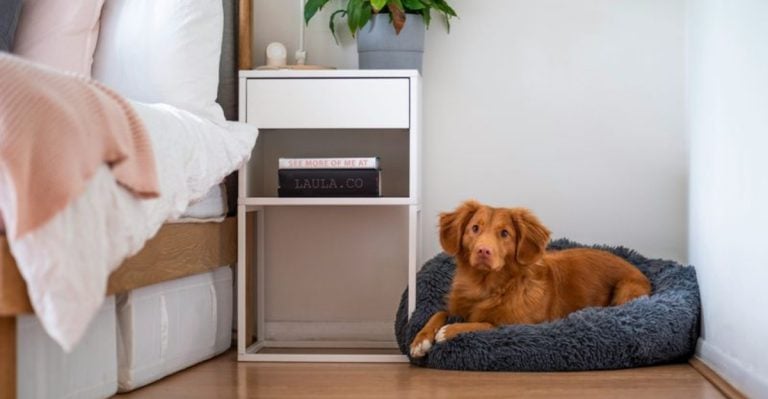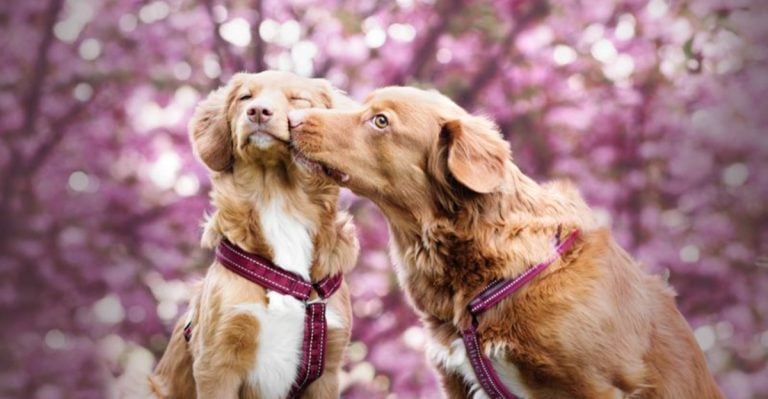Experts Say These Are the 11 Golden Rules of Pit Bull Care
Pit Bulls are loving, loyal companions that deserve the best care possible. Despite common misconceptions, these dogs can thrive in family environments when given proper attention and training.
Whether you’re a new Pit Bull parent or looking to improve your furry friend’s quality of life, following expert advice can make all the difference in raising a happy, healthy, and well-adjusted dog.
1. Commit to Early Socialization
Puppyhood shapes your Pit Bull’s entire life. Introduce your pup to different people, animals, environments, and experiences between 3-14 weeks of age. This critical window helps prevent fear-based behaviors later.
Arrange puppy playdates with vaccinated, friendly dogs. Visit pet-friendly stores, quiet parks, and invite gentle visitors over. Keep experiences positive and never force interactions.
A well-socialized Pit Bull grows into a confident adult who takes new situations in stride. Remember that socialization isn’t just a puppy task—it’s an ongoing process throughout your dog’s life.
2. Provide Consistent Training
Pit Bulls thrive with clear boundaries and expectations. Start training the day your dog comes home, using positive reinforcement methods like treats, praise, and play. Harsh corrections damage trust and can create anxiety or aggression.
Focus on basic commands first—sit, stay, come, and leave it. These form the foundation for more advanced skills. Short, fun sessions of 5-10 minutes several times daily work better than marathon training.
Consistency matters most. Everyone in the household must follow the same rules and commands. When your Pit Bull knows what to expect, they feel secure and behave accordingly.
3. Feed a High-Quality Diet
Muscular Pit Bulls need proper nutrition to maintain their athletic builds. Look for foods with real meat as the first ingredient and avoid those with excessive fillers like corn and wheat. Many owners find grain-free options beneficial, though consult your vet before switching.
Portion control matters! These food-motivated pups easily gain weight, which can strain joints and internal organs. Follow feeding guidelines on packaging as a starting point, adjusting based on activity level and body condition.
Fresh water should always be available. Consider feeding from puzzle toys or slow feeders to engage their minds while satisfying their appetites.
4. Provide Ample Exercise
Energetic by nature, Pit Bulls need regular physical activity to stay happy and prevent destructive behaviors. Aim for at least 1-2 hours of exercise daily through walks, play sessions, or hiking adventures.
Swimming offers excellent low-impact exercise for these muscular dogs. A tired Pit Bull is a well-behaved Pit Bull! However, avoid exercising during extreme temperatures—their short coats offer little protection from heat or cold.
Mix up activities to keep things interesting. Flirt poles, fetch games, and tug (with proper rules) are favorites among the breed. Remember that puppies and seniors need modified exercise appropriate for their life stages.
5. Mental Stimulation is Key
Bored Pit Bulls become destructive Pit Bulls! These intelligent dogs need mental challenges as much as physical exercise. Puzzle toys, snuffle mats, and treat-dispensing balls engage their problem-solving abilities and natural foraging instincts.
Teach new tricks regularly—Pit Bulls excel at learning and enjoy showing off their skills. Hide treats around the house for scent games, or try nose work activities that tap into their excellent sense of smell.
Rotate toys weekly to maintain interest, and consider training for dog sports like agility or rally. Mental exercise tires dogs differently than physical activity, creating a well-balanced, content companion.
6. Practice Responsible Containment
Secure fencing saves lives. Pit Bulls are athletic jumpers and determined diggers who need sturdy, 6-foot fences with buried chicken wire to prevent escapes. Never rely on electronic fences—they don’t keep other animals out or protect your dog from theft.
Always walk your Pit Bull on a sturdy leash with proper equipment. Standard collars can slip off during excitement, while well-fitted harnesses provide better control. Retractable leashes aren’t recommended as they offer little control in emergencies.
Crate training provides a safe space when you’re away. Choose appropriately sized crates and never use them for punishment.
7. Vet Care and Preventative Health
Regular veterinary check-ups catch health issues early. Pit Bulls commonly face skin allergies, hip dysplasia, and heart conditions that benefit from proactive care. Schedule wellness exams twice yearly, with senior dogs needing more frequent monitoring.
Stay current with vaccinations and parasite prevention. Monthly heartworm preventatives are non-negotiable, as treatment for heartworm disease is risky and expensive.
Spay or neuter your Pit Bull unless specifically breeding responsibly. This reduces cancer risks, prevents unwanted litters, and often decreases roaming tendencies. Dental care matters too—regular brushing and professional cleanings prevent painful issues down the road.
8. Understand Breed-Specific Legislation (BSL)
Knowledge protects your family. Research local laws before moving or traveling with your Pit Bull, as some areas restrict or ban these dogs entirely. BSL affects housing options, insurance policies, and even whether your dog can visit certain parks.
Carry documentation showing your dog’s good behavior. Canine Good Citizen certification and therapy dog credentials help challenge stereotypes. Consider microchipping and registering your dog as added protection.
Stay informed about legislative changes through organizations like the ASPCA or local advocacy groups. Being prepared means never having to choose between your home and your dog—a heartbreaking decision many unprepared owners face.
9. Offer Love, Structure, and Routine
Pit Bulls flourish with consistent daily schedules. Feed, walk, play, and train at similar times each day to create security and reduce anxiety. These routine-loving dogs quickly learn household patterns and look forward to their special activities.
Balance affection with boundaries. While cuddles and praise build bonds, too much pampering without rules creates confusion. A structured environment with clear expectations helps your Pit Bull understand their place in the family pack.
Make time for one-on-one connection daily. Even just 15 minutes of focused attention strengthens your relationship. Remember that Pit Bulls form deep attachments to their people—they’re not just pets, but family members who need emotional nurturing.
10. Supervise Interactions with Children and Other Pets
Never leave children and Pit Bulls unsupervised, regardless of how gentle your dog seems. This rule protects both the child and dog from misunderstandings. Teach children appropriate ways to interact—no ear or tail pulling, no climbing on dogs, and respect for sleeping or eating dogs.
Introduce new pets gradually using neutral territory techniques. Some Pit Bulls have prey drive toward smaller animals or same-sex aggression with other dogs. Know your individual dog’s temperament rather than making assumptions.
Watch for stress signals like lip licking, yawning, or whale eye (showing whites). Intervene before discomfort escalates to growling or snapping. Responsible management prevents incidents that fuel negative stereotypes.
11. Be a Responsible Ambassador
Your Pit Bull represents all bully breeds to everyone you meet. Train your dog to greet people politely, without jumping or excessive excitement. A well-mannered Pit Bull changes minds about the breed with every positive interaction.
Consider therapy dog training if your dog has the right temperament. Hospital and school visits showcase these dogs’ gentle nature. Share positive stories and correct misinformation when appropriate, but avoid defensive arguments.
Pick up after your dog in public and respect leash laws. These simple courtesies demonstrate responsible ownership. Remember that each well-behaved Pit Bull helps create a better future for the entire breed.

















